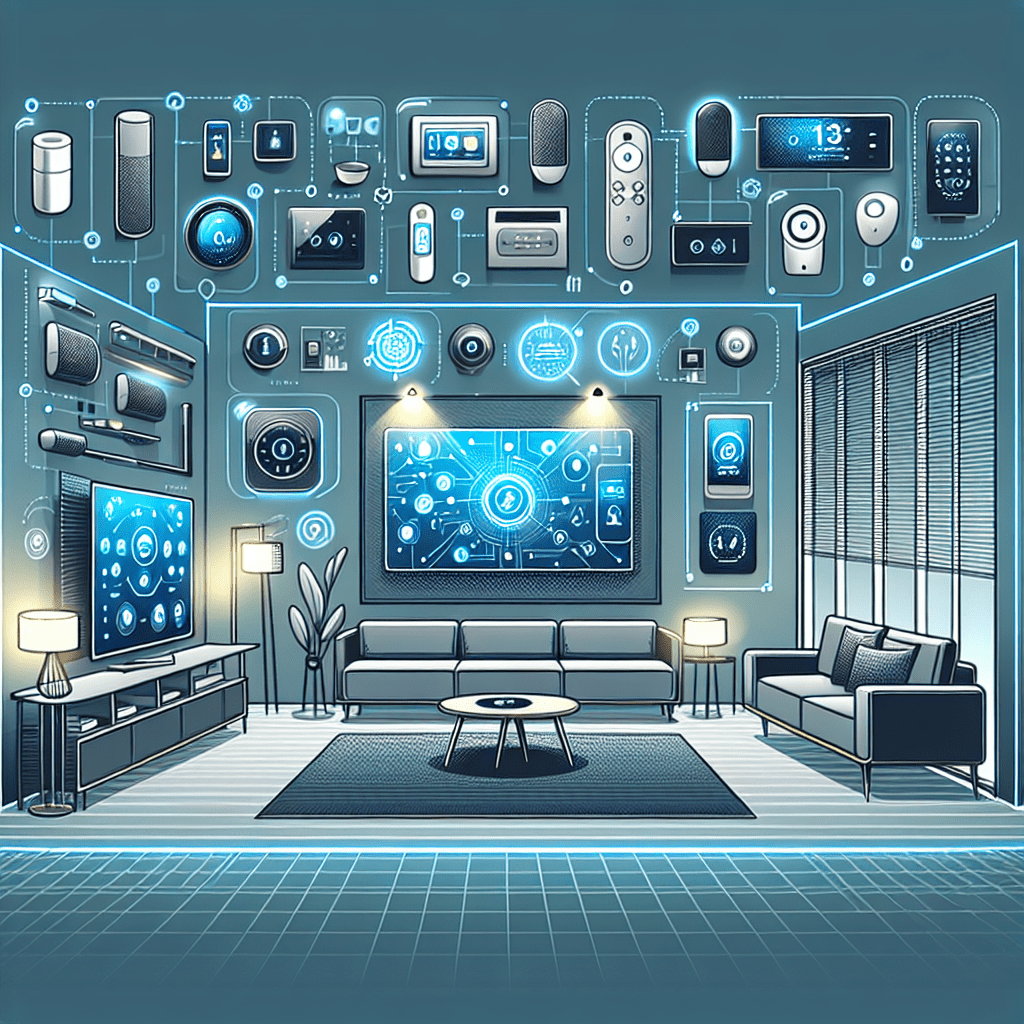In the vivacious world of home technology, there’s an ongoing debate that keeps puzzling homeowners: Should you spend more upfront on smart home technology to save on your energy bills in the long run, or should you stick with traditional home systems to keep initial costs low? “Balancing Energy Efficiency and Initial Cost: A Debate on Smart Home Technology” unravels the intricacies of this debate, showering you with insightful facts and compelling arguments. This article presents an intriguing journey that aims to untangle whether investing in advanced technology really pays off by enhancing the efficiency of your home and lowering your energy costs.

Understanding Energy Efficiency and Initial Cost
When looking to make your home smarter and more energy-efficient, there are two major factors that you need to consider: energy efficiency and initial cost. For many, finding a balance between these two aspects can be challenging.
Definition of Energy Efficiency
Energy efficiency, in simple terms, is a measure of how effectively a device or system converts energy into useful output. The more efficient a device is, the less energy it uses to perform its designated function. An energy-efficient home can help you save significant amounts of money because it reduces the amount of energy consumed, lowering your energy bills.
Defining Initial Cost
The initial cost commonly refers to the upfront cost that you need to pay to purchase a product or service. In the context of smart home technology, the initial cost includes the price of the device itself and any installation fees.
The Interplay Between Energy Efficiency and Initial Cost
There’s a crucial interplay between energy efficiency and initial costs in smart home technology. High-efficiency devices generally have a higher initial cost. However, the energy savings they provide over time often offset these high upfront costs. It’s essential to consider both these factors when making an investment in smart home technology.
The Role of Smart Home Technology in Energy Efficiency
Smart home technology can play a pivotal role in making your home more energy efficient. But what exactly is smart home technology?
What Is Smart Home Technology?
Smart home technology, also known as home automation, refers to a range of electrical devices and systems that automate tasks and control functions within your home. This technology can be controlled remotely, often via a smartphone app, providing you with the ability to manage your home’s energy usage more effectively.
The Role of Smart Home Technology in Energy Saving
Smart home technology can significantly enhance energy savings by allowing precise control over the energy usage of various devices. Smart thermostats, lighting, and appliances can adjust their usage based on your habits, reducing unnecessary energy consumption.
Examples of Energy-Efficient Smart Home Technology
Examples of energy-efficient smart home technology include LED lighting, which consumes significantly less energy than traditional bulbs, and smart thermostats, which optimize heating and cooling systems for energy efficiency. Additionally, smart power strips can detect when devices are not in use and cut power to those devices, thereby saving energy.
The Upfront Cost of Smart Home Technology
While smart home technology can yield substantial energy savings in the long run, these devices often come with a high initial cost.
Cost Variables in Smart Home Technology
Several factors contribute to the cost of smart home technology. These include the brand name, the complexity of the technology, the functionality of the device, and the cost of installation.
Examples of High Cost Smart Home Devices
Some examples of high-cost smart home devices include advanced home security systems, smart refrigerators, and automated lighting systems. These devices can cost several hundred to even thousands of dollars depending on the complexity and functionality.
Factors Contributing to the High Initial Cost of Smart Home Tech
Advanced technology, brand names, and unique features all contribute to the high initial cost of many smart home devices. The cost of installation can also be significant, particularly for systems that require professional installation.
Calculating the Return on Investment of Smart Home Tech
If you’re investing in smart home technology, it’s crucial to calculate the return on investment (ROI) to understand when you’d be able to recoup your initial costs.
Understanding Return on Investment (ROI)
ROI is a financial metric that is widely used to measure the probability of gaining a return from an investment. In the context of smart home technology, ROI is often calculated by dividing the amount of money saved from reduced energy consumption by the initial cost of the device.
ROI Calculation for Smart Home Technology
Calculating the ROI for smart home technology requires you to estimate the amount of energy that the device will save and then multiply that by the cost of the energy. You would then divide this figure by the initial cost of the device. This will give you an approximate timeframe when you’ll start saving money.
Case Studies on the ROI of Smart Home Tech
Studies have shown that investing in energy-efficient smart home technology can yield substantial returns. For example, it’s estimated that a smart thermostat can pay for itself in energy savings within two years.

Long Term Benefits of Energy Efficient Smart Home Tech
There are several long-term benefits to investing in energy-efficient smart home technology, which can outweigh the initial cost.
Energy Bill Reductions
One of the primary benefits of smart home devices is their ability to reduce energy bills. By using energy more efficiently, these devices can lead to considerable savings over time.
Environmental Impacts of Energy Efficiency
Another essential benefit is the positive environmental impact. By using less energy, you’ll reduce your carbon footprint and contribute to efforts to slow climate change.
Home Value Increase Due to Smart Home Tech
Smart home technology can also increase the value of your home. A home equipped with the latest smart home technology can fetch a better price on the market, making it an appealing investment.
The Argument Against High Initial Cost Smart Home Devices
While there are many advantages to smart home technology, the high initial cost can be a deterrent for many.
The Economic Barrier to Adoption
Many people view the high initial cost of smart home devices as a significant barrier to adoption. This can be particularly true for lower-income households.
The Perspective of Low-Income Households
For low-income households, the high upfront cost of these devices can be prohibitive. They may not have the financial means to make such an investment, no matter the potential savings in the long term.
Smart Home Tech as a Luxury Good
Due to the high initial cost, some view smart home tech as a ‘luxury’ good, questioning the need for such high-end devices when more affordable, albeit less efficient, alternatives exist.
Incentives and Policies Supporting Smart Home Tech Adoption
Thankfully, there are several incentives and policies in place to encourage the adoption of smart home technology.
Governmental Policies and Incentives
Many governments offer incentives to encourage the use of energy-efficient devices, including smart home technology. These incentives can come in the form of tax credits, rebates, or subsidies.
Energy Companies’ Incentives for Smart Home Use
Similarly, some energy companies offer incentives for using smart home devices. These can include reduced rates or cashback offers for reducing energy consumption.
Non-Profit Organizations and Energy Efficiency Initiatives
Several non-profit organizations run initiatives that promote energy efficiency and the adoption of smart home technology. These can provide another source of support for those looking to invest in smart home tech.
Cheaper Alternatives to High-priced Smart Home Devices
If the high cost of smart home devices is a barrier for you, there are cheaper alternatives available.
Cost-effective Smart Home Tech Options
Many cost-effective smart home technology options provide many of the same benefits as more expensive devices. For example, basic programmable thermostats, energy-efficient LED bulbs, and power-saving strips are all affordable alternatives.
DIY Approach to Smart Home Technology
If you’re handy, you could also consider a DIY approach to smart home technology. Many devices and software are available that enable you to create your own smart home solutions.
Second-hand and Refurbished Device Market
Another option is to purchase second-hand or refurbished smart home devices. These can often be purchased at a fraction of the cost of new devices.
Future Trends in the Price and Efficiency of Smart Home Tech
Looking toward the future, many trends could impact the price and efficiency of smart home technology.
Predicted Price Trends for Smart Home Technology
As more companies enter the smart home market, competition is expected to drive the prices of smart home devices down.
Innovations Driving Increased Energy Efficiency
Advancements in technology are also likely to increase the energy efficiency of these devices. As technology improves, devices should become more effective at minimizing energy waste.
Future Technologies on the Horizon
There are also many exciting technologies on the horizon, such as AI-powered systems and the internet of things, that will continue to transform how we manage and conserve energy in our homes.
Conclusion: Balancing Energy Efficiency and Initial Cost
Ultimately, when considering smart home technology, it’s essential to balance energy efficiency with the initial cost.
Weighing the Benefits and Drawbacks
When weighing your options, consider both the benefits (such as energy savings and environmental impact) and the drawbacks (like the high initial cost). Keep the long-term goals in mind as you make your decision.
Advice for Consumers Seeking Balance
For those seeking balance, look for devices that offer a strong blend of energy efficiency and affordability. Also, consider taking advantage of governmental incentives or company rebates that can help offset the initial cost.
The Importance of Informed Decision Making in Smart Home Tech
An informed decision is always worthwhile. Make sure to carry out thorough research and calculations before making your investment. Remember that the value of smart home technology extends beyond just energy savings — it also comes with added convenience, modernization, a potential home value boost, and the satisfaction of contributing to a more sustainable future. While the initial cost might seem high, the long-term benefits can be well worthwhile.



